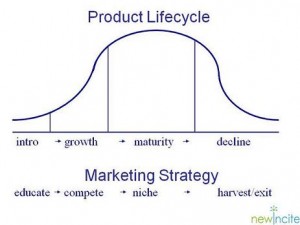Best Niche Market Biography
The consolidation of news departments through local marketing agreements between "major" network affiliates has been criticized for resulting in employee layoffs at the affected stations, and for reducing the number of editorial voices in a market, as two separately-branded newscasts may ultimately consist of much of exactly the same content. In 2009, Raycom Media (owner of Hawaii's NBC and MyNetworkTV affiliates) was faced with complaints after it announced that it would take over operations of CBS affiliate KGMB under such an agreement, fold all three stations into a shared news operation known as Hawaii News Now, and lay off parts of its workforce. The Media Council of Hawaii attempted to complain to the FCC about the agreement, stating that it would "directly reduce the diversity of local voices in a community by replacing independent newscasts on the brokered station with those of the brokering station." In response, the FCC stated it would begin to investigate into the matter[2][3]
Broadcasters can also collect carriage fees for the stations they operate under LMA's on behalf of their owner, often bundling its carriage agreements with those of stations they own outright. This can, especially in LMA's between two stations affiliated with "major" U.S. networks, allow the broadcaster to charge higher fees for retransmission consent to television providers for carrying the stations—which could result in smaller cable companies not being able to afford the higher fees imposed.[1][2]
However, many broadcasters who engage in the practice believe that such agreements are beneficial to the survival of television stations, especially in smaller markets—where the cost savings achieved through the consolidation of resources and staff may be necessary to fund a station's continued operation.[1][2]In a 2005 Canadian dispute, Rogers Communications and Newcap Broadcasting had a joint sales agreement pertaining to CHNO-FM in Sudbury, Ontario, but community interests and the lobby group Friends of Canadian Broadcasting presented substantial evidence to the Canadian Radio-television and Telecommunications Commission that in practice, the agreement was a de facto LMA, going significantly beyond advertising sales into program production and news gathering. LMAs in Canada cannot be implemented without the CRTC's approval, and in early 2005, the CRTC ordered the agreement to cease.[4]
In 2008, the Filipino Associated Broadcasting Company leased its airtime to the Malaysian broadcaster Media Prima (through the local subsidiary MPB Primedia, Inc) in a similar fashion to an LMA—with MPB Primedia providing entertainment programming, and ABC handling news programming and operations. Soon afterward, ABC and Media Prima were sued by rival media company GMA Network, Inc. for attempting to use the partnership to skirt laws requiring domestic ownership of broadcasters. In response, ABC's media relations head Pat Marcelo-Magbanua reiterated that the subsidiary was a Filipino company which was self-registered and Filipino-run.[5] The concerns became moot in 2010, when Media Prima announced it would divest its ownership in the network to PLDT's broadcasting subsidiary MediaQuest Holdings[6]
The consolidation of news departments through local marketing agreements between "major" network affiliates has been criticized for resulting in employee layoffs at the affected stations, and for reducing the number of editorial voices in a market, as two separately-branded newscasts may ultimately consist of much of exactly the same content. In 2009, Raycom Media (owner of Hawaii's NBC and MyNetworkTV affiliates) was faced with complaints after it announced that it would take over operations of CBS affiliate KGMB under such an agreement, fold all three stations into a shared news operation known as Hawaii News Now, and lay off parts of its workforce. The Media Council of Hawaii attempted to complain to the FCC about the agreement, stating that it would "directly reduce the diversity of local voices in a community by replacing independent newscasts on the brokered station with those of the brokering station." In response, the FCC stated it would begin to investigate into the matter[2][3]
Broadcasters can also collect carriage fees for the stations they operate under LMA's on behalf of their owner, often bundling its carriage agreements with those of stations they own outright. This can, especially in LMA's between two stations affiliated with "major" U.S. networks, allow the broadcaster to charge higher fees for retransmission consent to television providers for carrying the stations—which could result in smaller cable companies not being able to afford the higher fees imposed.[1][2]
However, many broadcasters who engage in the practice believe that such agreements are beneficial to the survival of television stations, especially in smaller markets—where the cost savings achieved through the consolidation of resources and staff may be necessary to fund a station's continued operation.[1][2]In a 2005 Canadian dispute, Rogers Communications and Newcap Broadcasting had a joint sales agreement pertaining to CHNO-FM in Sudbury, Ontario, but community interests and the lobby group Friends of Canadian Broadcasting presented substantial evidence to the Canadian Radio-television and Telecommunications Commission that in practice, the agreement was a de facto LMA, going significantly beyond advertising sales into program production and news gathering. LMAs in Canada cannot be implemented without the CRTC's approval, and in early 2005, the CRTC ordered the agreement to cease.[4]
In 2008, the Filipino Associated Broadcasting Company leased its airtime to the Malaysian broadcaster Media Prima (through the local subsidiary MPB Primedia, Inc) in a similar fashion to an LMA—with MPB Primedia providing entertainment programming, and ABC handling news programming and operations. Soon afterward, ABC and Media Prima were sued by rival media company GMA Network, Inc. for attempting to use the partnership to skirt laws requiring domestic ownership of broadcasters. In response, ABC's media relations head Pat Marcelo-Magbanua reiterated that the subsidiary was a Filipino company which was self-registered and Filipino-run.[5] The concerns became moot in 2010, when Media Prima announced it would divest its ownership in the network to PLDT's broadcasting subsidiary MediaQuest Holdings[6]
Best Niche Market
Best Niche Market
Best Niche Market
Best Niche Market
Best Niche Market
Best Niche Market
Best Niche Market
Best Niche Market
Best Niche Market
Best Niche Market
Best Niche Market
Best Niche Market
Best Niche Market
Best Niche Market
Best Niche Market
Best Niche Market
Best Niche Market
Best Niche Market
Best Niche Market
Best Niche Market

























































